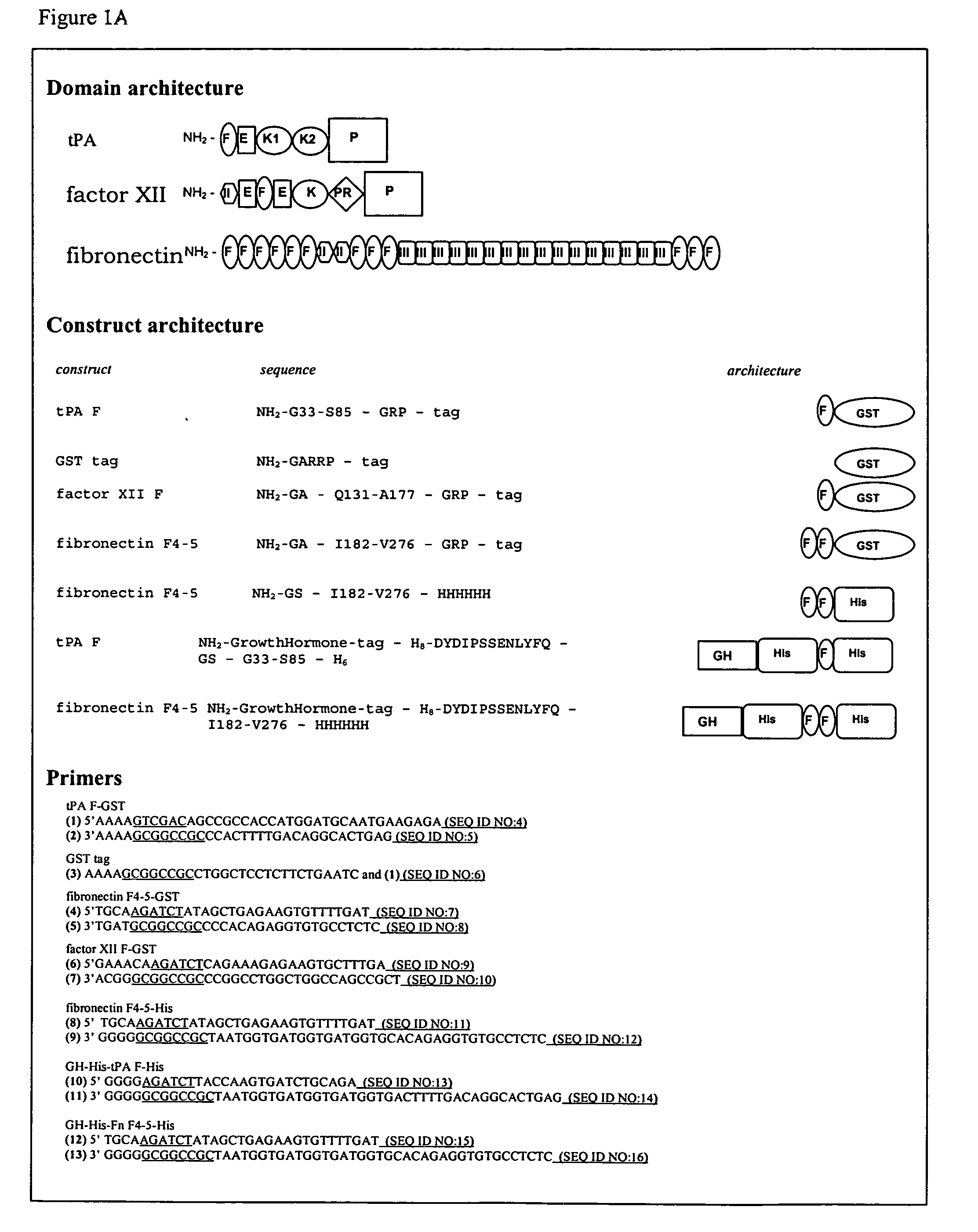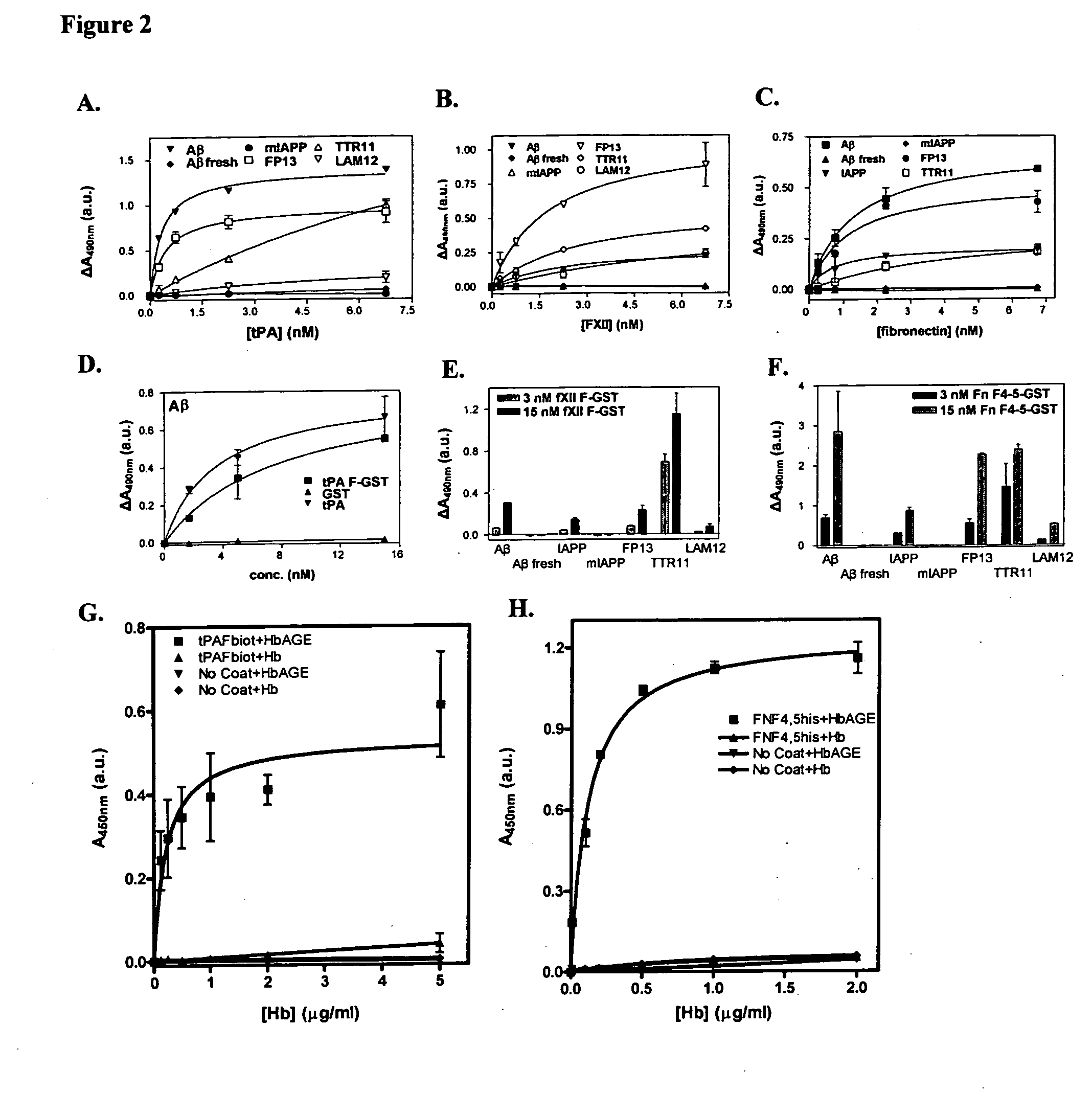Cross-beta structures on microbial organisms
a cross-beta and microorganism technology, applied in the field of biotechnology and microorganisms, to achieve the effect of decreasing an infection with a pathogenic bacterium and decreasing an infection with a pathogenic fungus
- Summary
- Abstract
- Description
- Claims
- Application Information
AI Technical Summary
Benefits of technology
Problems solved by technology
Method used
Image
Examples
example 1
Bacterial Cells with Amyloid-Like Core Protein Activate the Fibrinolytic System in Vitro
[0063] The Streptomyces coelicolor bacterium strain comprises a family of core proteins, chaplins A-H, which have adopted amyloid-like fibril conformation (Claessen et al., 2003). We now show that contacting the wild-type strain with tPA, plasminogen and plasmin substrate S-2251 results in activation of tPA and plasminogen (FIG. 1B). Interestingly, a mutant strain that lacks the amyloid-like core protein, does not stimulate tPA activation (FIG. 1B).
[0064] The data show that the presence of the chaplin core proteins with amyloid-like conformation, on the surface of Streptomyces coelicolor cells activates the fibrinolytic pathway, by activation of tPA. Cells of a mutant strain lacking the genes that encode for the amyloid-like chaplin do not induce tPA activation. Activation of the fibrinolytic cascade or of factor XII, the key protein in the contact system of blood coagulation, by several diffe...
example 2
tPA, Factor XII, Fibronectin and the Fibronectin Type I Domains of tPA, Factor XII and Fibronectin Bind to Protein Aggregates with Cross-β Structure Conformation
[0065] Previously, we established that tissue-type plasminogen activator specifically interacts with protein and peptide aggregates that comprise a cross-β structure conformation, a structural element found in amyloid-like polypeptide assemblies (Bouma et al., 2003; Kranenburg et al., 2002). Now, we expanded this analysis to other proteins that resemble tPA domain architecture and we separated domains of tPA. Binding of full-length tPA, factor XII and fibronectin, as well as of fibronectin type I (finger, F) domains of tPA and factor XII and F4-5 of fibronectin, to protein and peptide aggregates with cross-β structure conformation was analyzed in an ELISA. In FIG. 1 it is shown that the full-length proteins as well as the recombinant F domains bind specifically to cross-β structure rich compounds. Binding of tPA and factor...
PUM
| Property | Measurement | Unit |
|---|---|---|
| concentration | aaaaa | aaaaa |
| concentration | aaaaa | aaaaa |
| volume | aaaaa | aaaaa |
Abstract
Description
Claims
Application Information
 Login to View More
Login to View More - R&D
- Intellectual Property
- Life Sciences
- Materials
- Tech Scout
- Unparalleled Data Quality
- Higher Quality Content
- 60% Fewer Hallucinations
Browse by: Latest US Patents, China's latest patents, Technical Efficacy Thesaurus, Application Domain, Technology Topic, Popular Technical Reports.
© 2025 PatSnap. All rights reserved.Legal|Privacy policy|Modern Slavery Act Transparency Statement|Sitemap|About US| Contact US: help@patsnap.com



